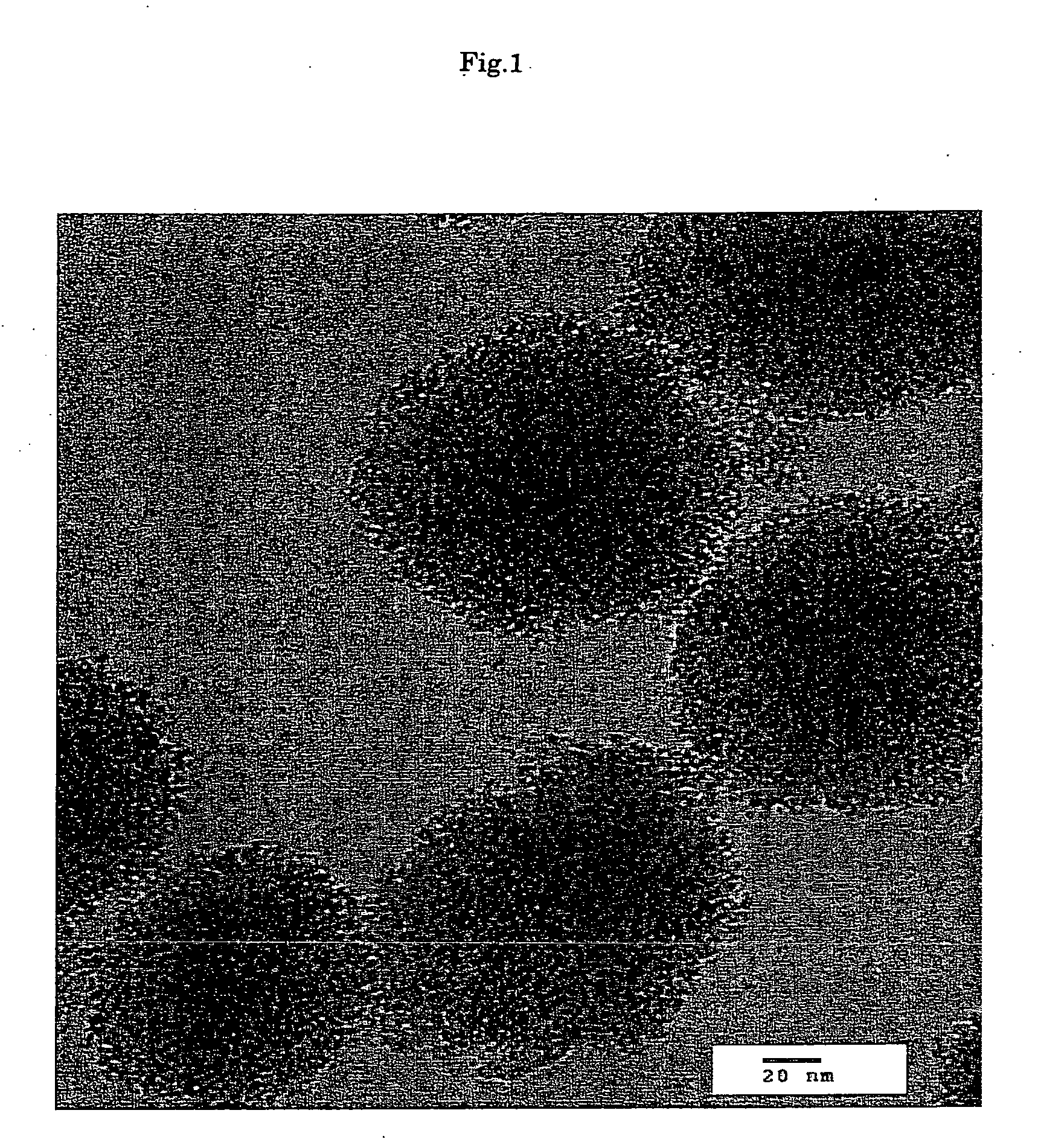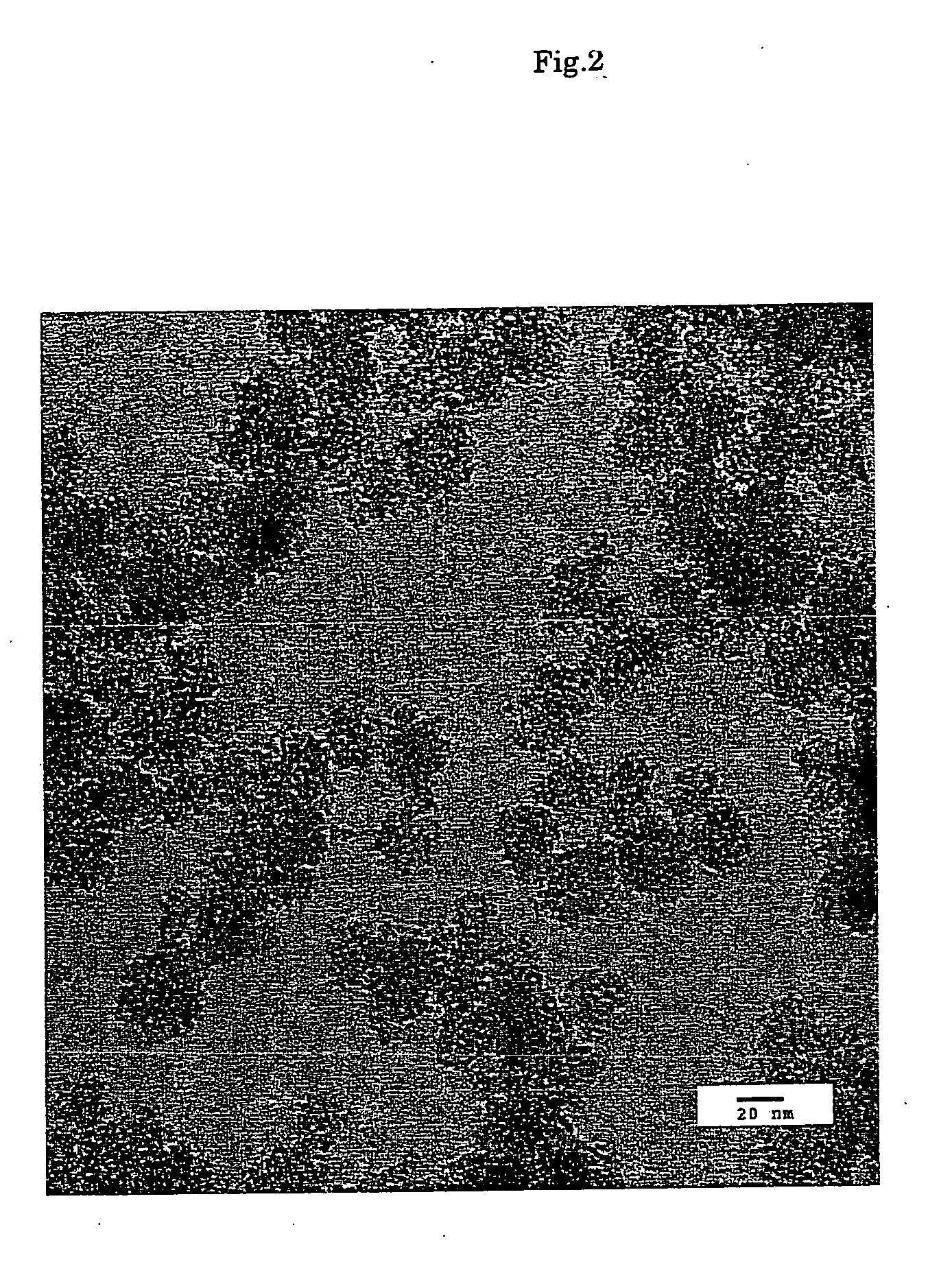Porous titanium oxide powder and method for production thereof
a technology of porous titanium oxide and titanium oxide powder, which is applied in the direction of titanium compounds, body powders, make-up, etc., can solve the problems of poor spreadability, difficult dispersibility in the product base system, and actual use, and achieve excellent ultraviolet protection ability, usability and transparency.
- Summary
- Abstract
- Description
- Claims
- Application Information
AI Technical Summary
Benefits of technology
Problems solved by technology
Method used
Image
Examples
example 1
[0058] 1 mol of glycerol was added to 1 L of a 1 mol / L titanium tetrachloride aqueous solution, and heating was carried out for 3 hours at 90° C. After that, the residue was filtered off and redispersed in 1 L of ion exchange water, 4 mol of hydrochloric acid was further added, and heating was carried out for 3 hours at 90° C. The solution was then adjusted to pH 7 using sodium hydroxide. After that, filtration, washing with water, and drying (105° C., 12 hours) were carried out, thus obtaining a powder.
[0059] A TEM micrograph of the titanium oxide powder obtained is shown in FIG. 1. This powder was porous titanium oxide having a rutile crystalline form, a particle diameter of approximately 90 nm, and a specific surface area of 361 m2 / g, and had a spherical shape.
example 2
[0060] Powders were prepared as in Example 1, except that the glycerol concentration was changed. The results are shown in Table 1.
TABLE 1ParticleSpecificGlyceroldiameterCrystallinesurface area(mol / L)Shape(μm)form(m2 / g)0Fan-shaped or1˜5Rutile125spherical with fissures0.1Porous spherical0.3˜2 Rutile134(with agglomerationbetween secondaryparticles)0.5Porous spherical0.04Rutile3551Porous spherical0.09Rutile3612Porous spherical0.10Anatase3333Porous spherical0.06Anatase302(some loss of shape)5Fine particle agglom-—Anatase 35erate (irregular shape,hardly any pores)
[0061] It can be seen from Table 1 that the particle diameter and the specific surface area change with the aliphatic alcohol concentration (glycerol concentration). In the case that the aliphatic alcohol is not added or the case that the aliphatic alcohol is added excessively, the specific surface area is low, and a spherical porous powder is not obtained. The aliphatic alcohol concentration should thus be 0.1 to 5 mol / L, pr...
example 3
[0065] A powder was manufactured as in Example 1, except that 3 mol of acetic acid was added together with the glycerol, whereupon porous titanium oxide having an anatase crystalline form, a particle diameter of approximately 30 nm, and a specific surface area of 389 m2 / g was obtained. A TEM micrograph of this powder is shown in FIG. 2.
[0066] As can be seen from comparing Example 3 and Example 1, upon using a carboxyl / carbonyl compound together with the aliphatic alcohol, the particle diameter became lower, and moreover the crystalline form changed from rutile to anatase.
PUM
| Property | Measurement | Unit |
|---|---|---|
| specific surface area | aaaaa | aaaaa |
| mean particle diameter | aaaaa | aaaaa |
| mean particle diameter | aaaaa | aaaaa |
Abstract
Description
Claims
Application Information
 Login to View More
Login to View More - R&D
- Intellectual Property
- Life Sciences
- Materials
- Tech Scout
- Unparalleled Data Quality
- Higher Quality Content
- 60% Fewer Hallucinations
Browse by: Latest US Patents, China's latest patents, Technical Efficacy Thesaurus, Application Domain, Technology Topic, Popular Technical Reports.
© 2025 PatSnap. All rights reserved.Legal|Privacy policy|Modern Slavery Act Transparency Statement|Sitemap|About US| Contact US: help@patsnap.com



